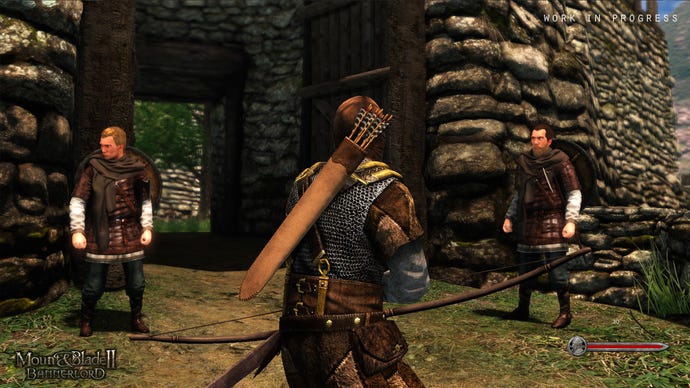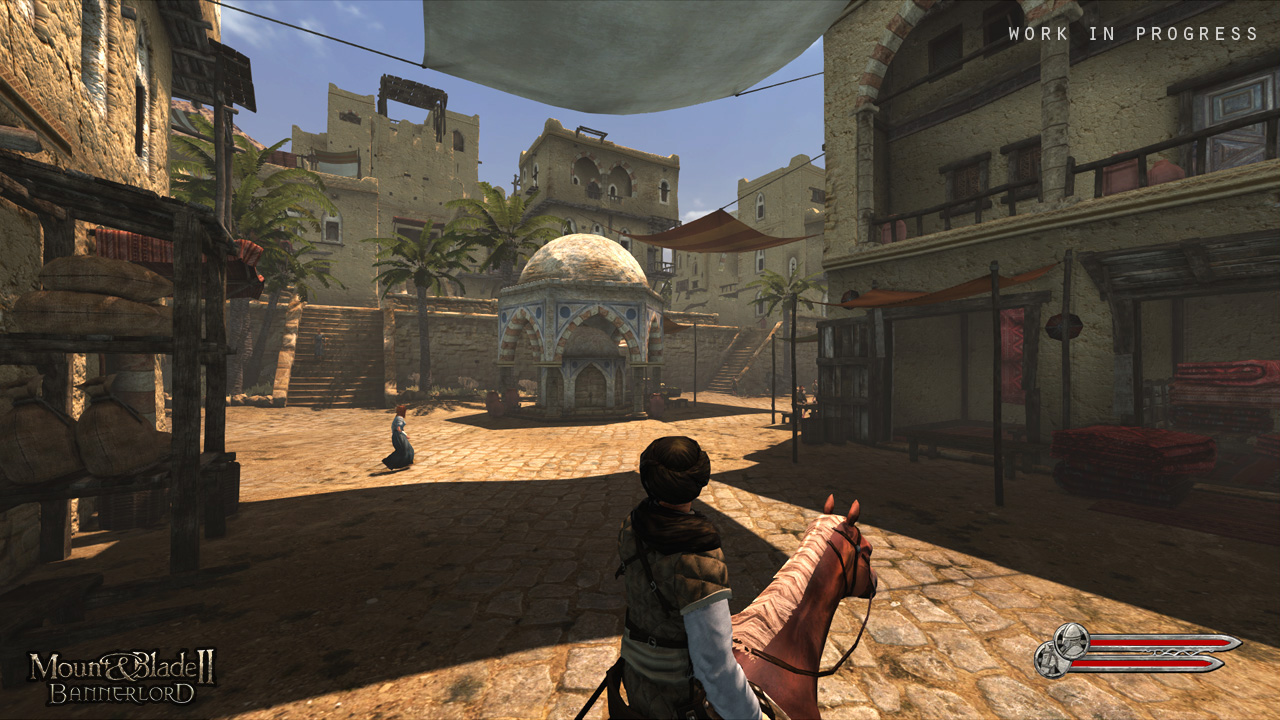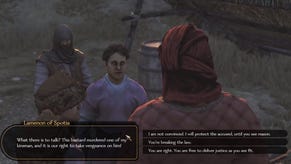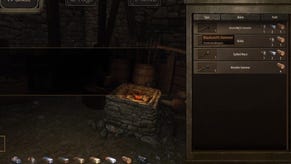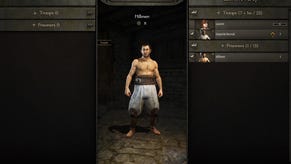Mount and Blade 2: Bannerlord - Hands on with revamped combat in a fully simulated medieval world
Mount and Blade 2: Bannerlord is easily one of the most ambitious indie RPGs ever. But that’s what you’d expect from a project that’s been in development for over seven years. From expansive medieval siege multiplayer to freeform solo questing, Taleworlds is sparing no effort to make this all-encompassing prequel a success.
First off, it’s huge: when you jump into the campaign map to get your bearings you have to scroll back at least three times to get the whole continent on-screen. Rather than have swathes of dead space though, Mount and Blade 2’s world functions in a refreshingly different way to bigger budget sandboxes.
You travel between settlements zoomed out on horseback, just like the last game, but Bannerlord has hundreds of interconnected, medium-sized areas which you can navigate easily using a fast-travel system that works inside towns and villages, not just between them. It’s a great quality-of-life feature that alleviates some of the game’s many loading screens. Say you hear at the tavern that a brigand you want to recruit’s been thrown in the town jail - you can still walk out of the pub, across town, into the keep, down to the cellar and into the dungeon if you want - or just pop open a menu and head straight there. When there’s so much to do in Mount and Blade 2, it’s important to keep the player from getting bogged down in minutiae, and fast-travel keeps the pace high while leaving the option for hardcore roleplayers to stay in the game world.
“We have something like over 30, almost 40, different towns, hundreds of villages and a lot of castles,” TaleWorlds founder Armagan Yavuz says.
“All the towns are being individually modelled, everything looks different from everything else. If you combine them together, that’d be really huge - I didn’t really do the maths - but it’s big.
“In [Mount and Blade:] Warband, basically everything was driven through menus and it was still nice, but a little bit clunky. We got rid of those menus and now everything is much more streamlined. Everything you can do in the scenes you can do from the menu to save you time. This is a bit risky, because maybe there could be questions about whether it’s immersive. In my opinion it pays off, because once you get into it, people should want to explore the scenes because they are interesting and pulling you in, not because you’re obliged to do it.”
Carrying on from previous games in the Mount and Blade series, Bannerlord’s quests work differently from most RPGs too. You still create your own character and focus on a particular set of skills that you can train up as you progress, but as you make your way around the game’s fictionalised, but realistic, medieval world with the ultimate goal of commanding your own kingdom, you discover situations for yourself rather than following a grand main storyline. The factions in Bannerlord are loosely based on real-world civilisations and cultures, and you can interact with them in different ways as you rise to the top.
“There’s no basic story that you have to follow, you just need to get into the game, understand the dynamics and make your own story,” Yavuz explains. “In single-player, what we are aiming to do is have a seamless progression from being a lonely adventurer to becoming a ruler with armies at your disposal, directing sieges.”
“We tried to make sure that all of the gameplay elements work in all situations. At the very beginning of the game you only have yourself and a few other guys to command, so when you go into a big battle you don’t really have a huge effect on that - but you can hunt down bandits and such.
“In the middle of the game, you have a sizable battalion under your command, but still not a big army. So when you go into a battle the overall commander will delegate some troops to you, for example a section of the cavalry. Then you’ll be able to contribute to the battle by commanding those troops.
“When you become the king or the commander, then you can direct everything. There’s a progression, and all of those are equally worked on.”
In towns, forts, and villages, the gameplay in Bannerlord is mostly about speaking to people, trading supplies, and making dialogue choices, but when it comes to the battlefield it’s an interesting mix of action-RPG and strategy, played from a familiar third-person action perspective that’s tight to the shoulder. This means that when you’re commanding units you’re making decisions based on what you can see and react to instead of being an omniscient being. While in more intimate skirmishes - such as the combat arena you can battle in to earn money - the perspective has allowed TaleWorlds to add more layers to the mechanics of one-on-one fights.
“We still get a lot of input from the community and it’s very useful,” Yavuz laughs. “I read all the suggestions all the time and we get great feedback and great ideas.
“We have directional shield combat in the game. We hadn’t thought about it, but someone made that suggestion on the forums and other people actually shut them down and said, ‘That wouldn’t work’. But then it occured to me that it could work.”
As the years have passed, TaleWorlds has had to be smart about the size of what it’s trying to build, and use all available tools effectively. So even though Mount and Blade as a series was a solo experience first, this has led to quite a flat division of resources between the single and multiplayer modes in Bannerlord, which share systems and mechanics.
“We tried to build the technology and use it in all various types of ways to support different kinds of gameplay,” Yavuz says.
“Both are important in their own right. When I think of these things I try to think of it like total economy. That’s why modding is so important for us too. Once you invest in technology and build stuff, then it’s a pity if it’s only used in a small section and not everything.”
All of this comes together to create something which still has lots of rough edges, and some people will bounce off of because of the complexity, but has undeniable charm and the potential to be engrossing for dozens of hours.
If nothing else, Mount and Blade 2: Bannerlord is certainly its own thing. This is the only place you’re going to get a giant medieval world to explore, large-scale siege battles, and open-ended questing all in one package. After such a protracted development, it’s going to be interesting to see if TaleWorlds can piece it all together.
Mount and Blade 2: Bannerlord will be available on PC, but there’s still no firm release date.
